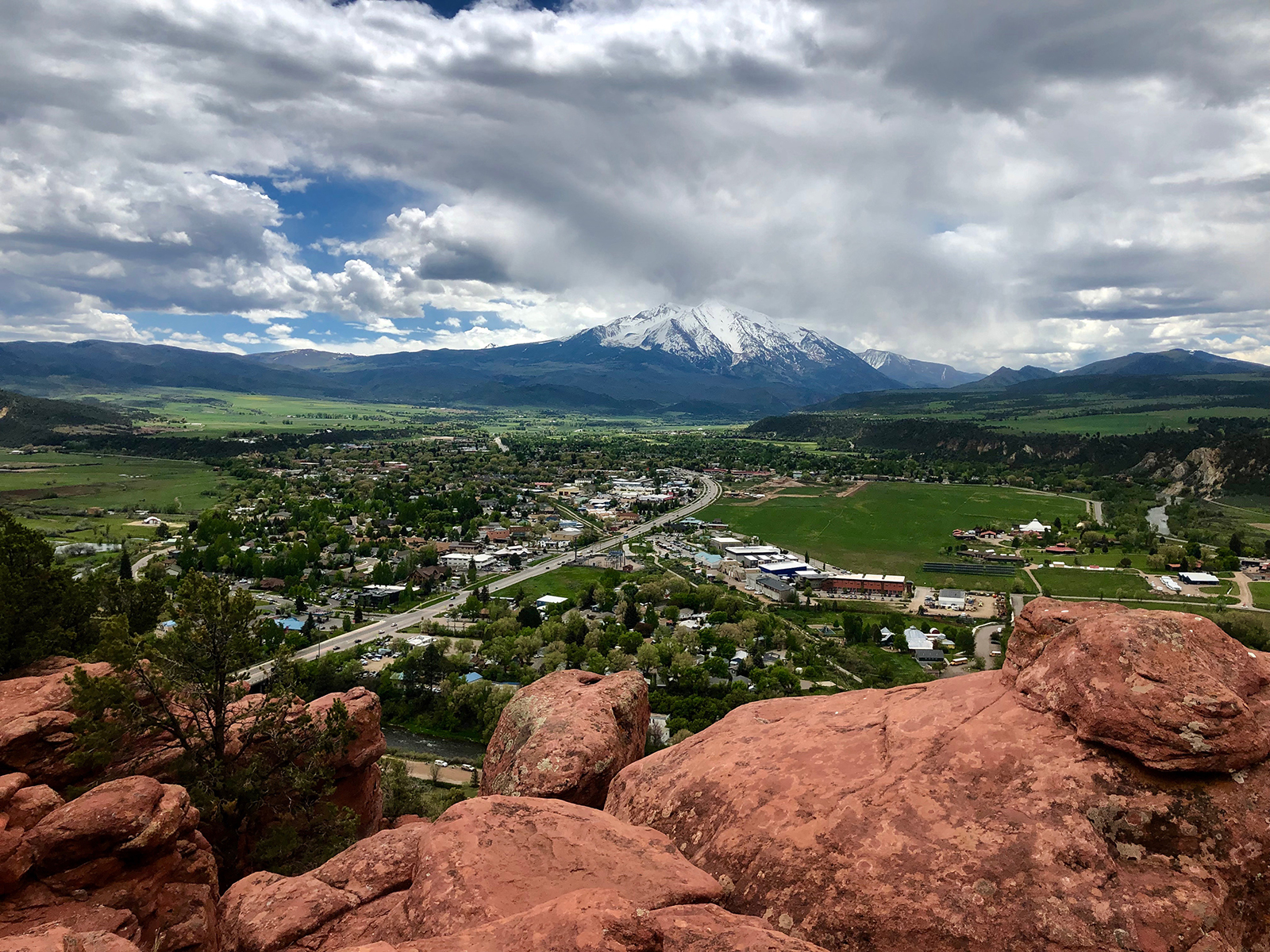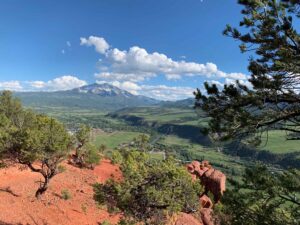
Davis Farrar arrived in the Roaring Fork Valley in November of 1979. He was the Garfield County Planner for two and a half years before taking on the same role in Carbondale briefly, after which he became Town Manager, a position he held until 1995.
Chris Brandt moved to the valley in 2009 and has raced mountain bikes for 30 years. When he isn’t on his saddle navigating the twists and turns of Colorado and Utah singletrack, Chris is a landscape architect involved with a wide range of project work including stormwater design, renewable energy site development, and high-end private residential gardens. His trail design concepts were recently approved for construction, which will result in the first mountain bike-specific trail network to be built in a National Park (Great Smoky Mountains).
All the while, as these two individuals wrote their stories, Red Hill loomed large in their backyard, slowly gaining popularity during the second half of the 20th century. Anyone who has driven through the Roaring Fork Valley will recognize this distinctive natural feature almost smack-dab in the heart of Colorado’s Rocky Mountains. The desert-like red hued cliff bands dotted with stumpy pinyon and junipers that sits opposite to Mount Sopris is a symbol of Carbondale.
Davis and Chris learned early on the community benefit of the Red Hill trail system and were forward thinking in their understanding that responsible outdoor recreation could be used as a means of conversation rather than overconsumption.
The reconnaissance of Red Hill started in the 1990s. Davis, alongside a group of local residents, found social trails that were isolated to the front side of the land (Mushroom Rock to those familiar with the area). “Kids would have woodsies up there,” Davis recalled referring to unofficial gatherings for the Roaring Fork Valley’s youth that may or may not have included a keg of beer or two.
The group of citizens worked closely with the Town of Carbondale and the Bureau of Land Management (BLM) to understand the recreation potential of the roughly 3,000 acres of public land. Undeterred by the glacial-pace of bureaucracy as it relates protecting public land, Davis led the charge in researching Red Hill’s flora and fauna and worked with the BLM to craft a master plan.
The Resource Management Plan was adopted on January 1, 2000 by the Department of Interior, and after a wildly long vetting process the area was designated as a non-motorized Special Recreation Management Area (SRMA) by t

he BLM. Shortly thereafter in 2000, The Red Hill Council became a private nonprofit 501(c)(3).
Red Hill is home to ever increasing numbers of users with an annual average of 75,000 . On any given day, both in the summer and winter, hikers can be found (often with their dog in tow) coexisting with bikers. This outdoor recreation was precisely the goal of the Red Hill Council at the turn of the century, however today substantial numbers and sometimes careless use have adversely impacted the trails that intertwine the Red Hill Area. The aforementioned dogs often frolic off-leash, creating their own trails (which then become social trails) and damaging sensitive vegetation and impacting wildlife. Hikers and bikers venture out in March and April and wreak havoc on trails during the mud season.
The highest monthly volumes of Red Hill trail use occur in March and April, when the trails are most vulnerable to damage during the transitional mud season each Spring. Users who visit during inclement conditions damage the constructed trail structure and their soft footprints and tire tracks harden into a pitted texture when the trails eventually dry. Those who attempt to walk around the mud end up causing even more damage, widening the trails and increasing the need for annual volunteer-driven maintenance.
As an active trail builder and user, Chris’ uniquely intertwining knowledge of mountain biking and mountain ecosystems allows him to understand how erosion happens and to know precisely which features must be protected. Red Hill is composed of several unique geologic and soil types that must be factored into critical maintenance activity, and soil moisture greatly influences when maintenance work can take place each year.
Trails around Red Hill were built for shared, and because of this, Chris recounted that there is not much of an “us versus them” mentality in referencing the bikers and hikers that use the trails. Recent trail improvements near the trailhead have provided separated-use routes, to help reduce hiker-bike conflicts in congested areas. That’s the good news…
The bad news is that increased popularity and usage has equated to ill-advised and often resource-damaging behavior. Interestingly enough, uninformed and irresponsible use is often practiced by residents of Carbondale themselves as much as visitors to the Roaring Fork Valley. To address this situation, information and awareness is as important as ever for the Red Hill Council, who is driving an educational campaign that seeks to promote responsible recreation in the valley, in collaboration with other valley-wide stewardship groups.
Chris and Davis both implore users to understand the timing of when it is appropriate to visit the trails, and perhaps more importantly when NOT to use the trails. During mud-season, trails become more vulnerable as the sun thaws the frozen ground. In addition, the non-profit Red Hill Council board asks bikers and hikers to ride and walk on dirt rather than mud. For furry friends, keep them leashed and pack out their poop. No matter the activity of choice, recognize that turning back and visiting another day may be the most sustainable option.
The Red Hill Council has built partnerships with a wide array of local stewardship organizations, including Roaring Fork Outdoor Volunteers and the Roaring Fork Mountain Bike Association. Collaboration with Trail Forks and MTB Project.com has resulted in improved wayfinding options via app-based trail mapping. Each of these partnerships offers an avenue to promote strong messaging on ethics and usage, yet still the power remains in the hands of those living in and around Carbondale.
The Red Hill trail network exists only as a result of many volunteer outdoors enthusiasts sacrificing their time and energy to protect and preserve a super special piece of land adjacent to Carbondale, and for today’s users, giving thanks is rather simple.
By advocating for responsible usage, the Red Hill Council and the trails that they steward will survive and thrive for years to come.

Join us for CCC’s third annual Pottery Throwdown Relay on Saturday at 6pm under the judging tent. Eight teams of four wi...
Click to Learn More